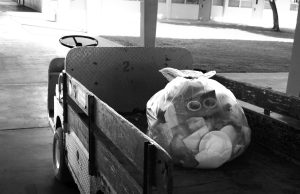Will we survive a disaster?
This week, a shooter released round after round of bullets into a crowd of people at the Route 91 Harvest Festival in Las Vegas, turning a peaceful music festival into the scene of a massacre. In the world we live in, disasters are everywhere, from shooters at concerts and schools, to earthquakes shaking Mexico, hurricanes threatening to ravage the east coast and the Caribbean and fires burning through the mountains in California. Now more than ever, plans for the worst are necessary to be prepared for the horrific situations that seem to be occurring more and more frequently. Yet, doing drills at school just make students feel mildly annoyed– not safely prepared– and if we realistically consider what would actually happen should a disaster strike, we are not ready.
In 2007, a 15-year-old boy called into Newbury Park High School and falsely reported a bomb scare. Sheriff deputies called the U.S. Navy Seals and Cal State University Channel Islands police to come with explosive-sniffing dogs to locate the bomb on the campus, while students and faculty were instructed to wait on the field. Kelly Welch, Assistant Principal of Attendance, said that the evacuations were chaotic and stressful at the time, although they were able to get everyone out safely.
“Since then we have made a little bit of changes to our student release procedure on how parents can come get their kids,” Welch said. But is it enough to keep everyone safe? What if another bomb threat happened, and this time it was real? Could waiting at the field be more harmful to students than beneficial?
Most of the safety plans rely on common sense. Don’t stand near a window when there is an unknown intruder on campus. Although this seems logical, there is not one place in a classroom not in front of a window, so staying in a classroom makes us easy targets for anyone with a gun. While the plans may make sense on paper, in practice it is clear to see that they fall short.
Schools in the area with a higher risk for a school shooting have different plans. After the San Bernardino school shooting, Los Angeles Unified School District released their safety procedures, showing their realization that a lockdown, where students are just “hiding” behind locked doors, may not be an appropriate response to intruders or shooters. They added a detail in their plans stating that when there is imminent danger, teachers or designated administrators may move students or even leave school to ensure the safety of the students.
While we are the least prepared for lockdowns, it is important to recognize the efforts that are being made to rectify this, including an upcoming training organized by the on-campus police officer, Deputy Joe Ramirez.
“He and I have spent a lot of time in the last couple of months looking over our school safety plan,” Welch said. “He has helped to organize the staff training that is going to occur in a couple of weeks. We’re also going to be putting together several videos through Panther TV for our students, involving Ventura County sheriff’s, providing some information for our students.”
It is also important to realize that the lack of effectiveness of our disaster plans is largely due to the lack of sincerity the students have while participating in drills. During the duration of the drill, many students opt not to cooperate with administrators or teachers. They mess around and pay little attention to those who are trying to keep them safe. The real possibilities of tragedies happening are not considered, and students act like the drills do not matter. In reality, they are the rehearsal for a performance that might save countless lives.
To this, Welch advises students to start taking drills and lessons about safety more seriously, pointing out that it is critical to be prepared because disasters like fires or earthquakes do not come with a warning.
In California, we are especially prone to wildfires. But are we ready for a major fire? Many students can still recall the 2012 fires that ravaged through Camarillo and the Santa Monica Mountains and the chaotic attempts to send students home. These memories will make you wonder, what would happen now? What would be different?
Another natural disaster that threatens California is an earthquake. There are not enough policies in the world to ensure safety while the ground is shaking and they certainly will be ineffective if they cannot be carried out to the full extent. We have all practiced getting under the desks and holding our heads, but what if you do not fit, or there is no desk to get under? Students have not been prepared and have not tried to prepare themselves for these just-in-case scenarios, but at almost any time they may become a reality.
Although it is understandable that district policy that is hard to change and that disaster plans are hard to logically make perfect, this is a call for students and administrators to better prepare themselves for the worst to happen. We have been lucky thus far, and optimistically there are no terrible events in the foreseeable future, but let’s not wait until a disaster is upon us to realize that our school policies will not protect us.


